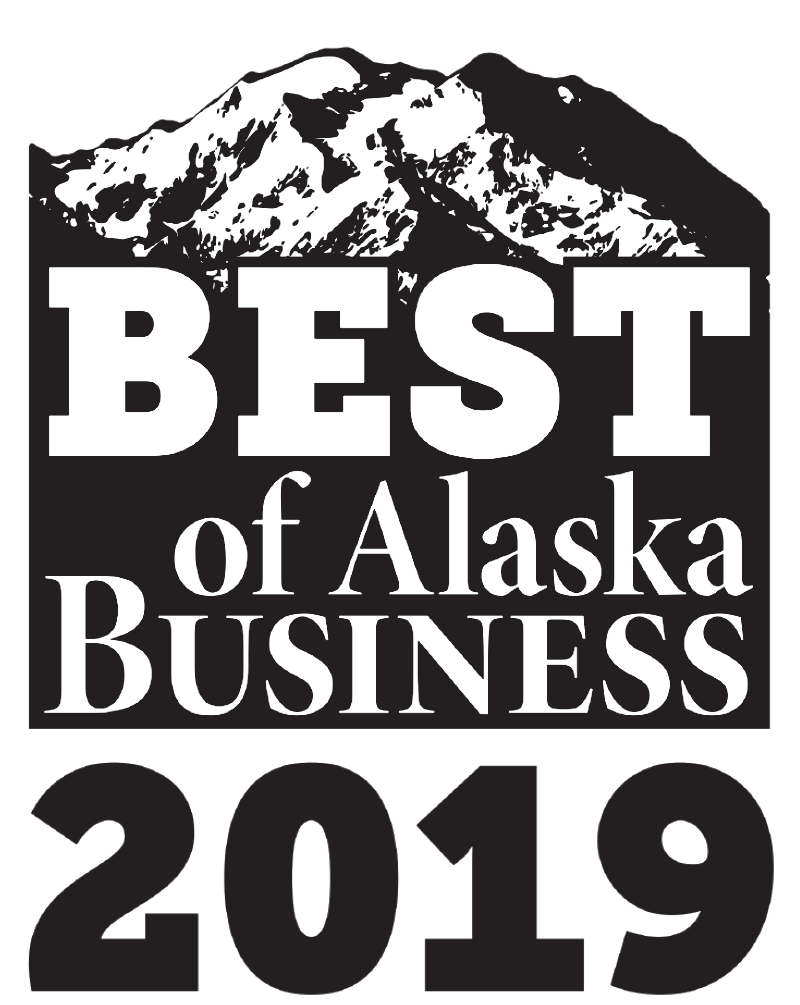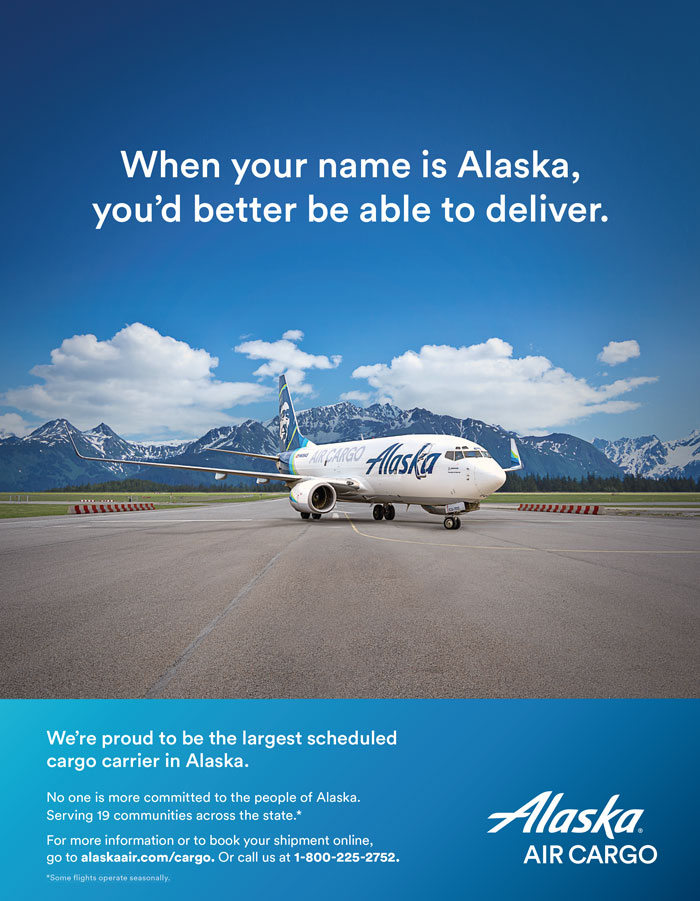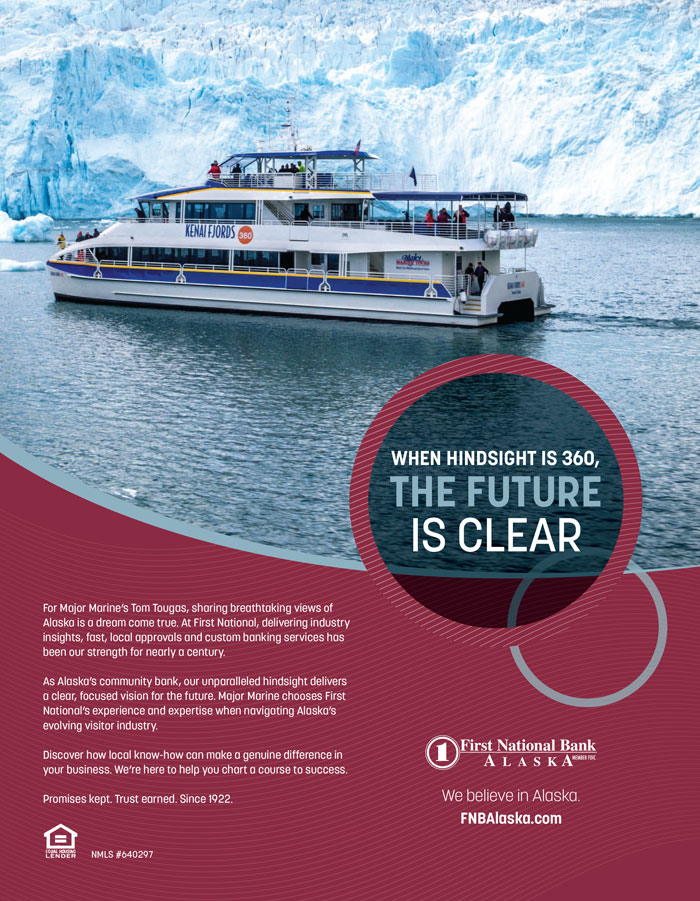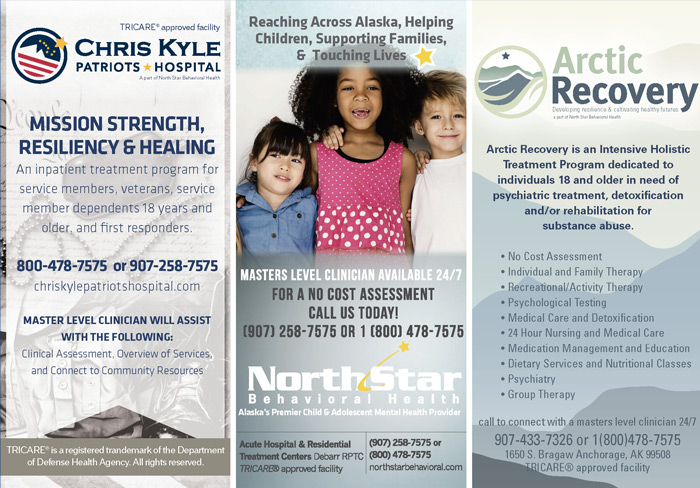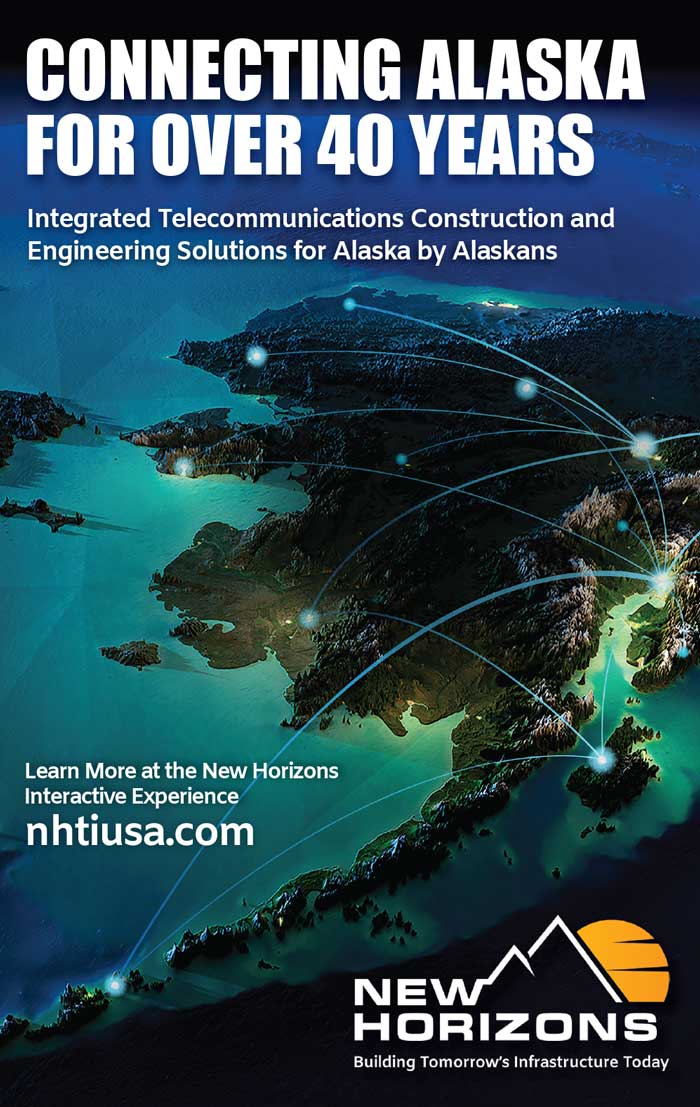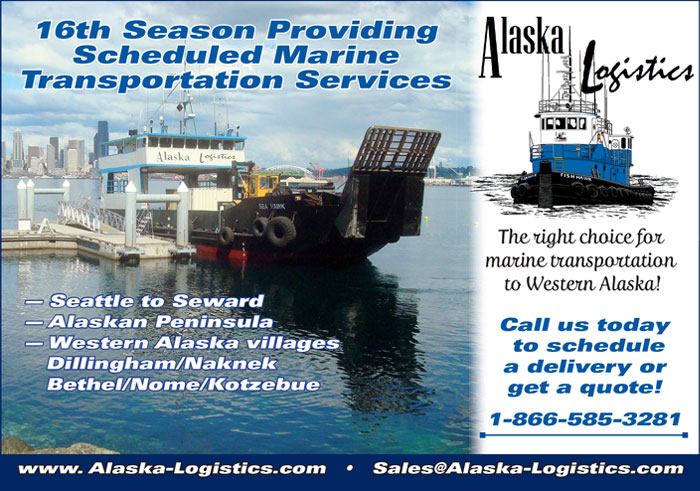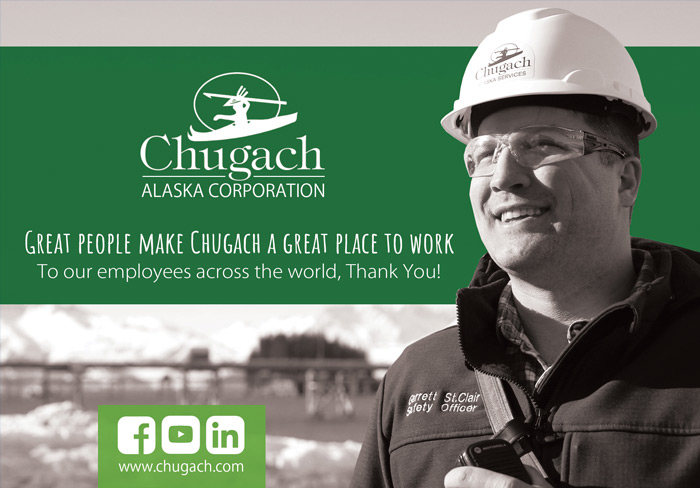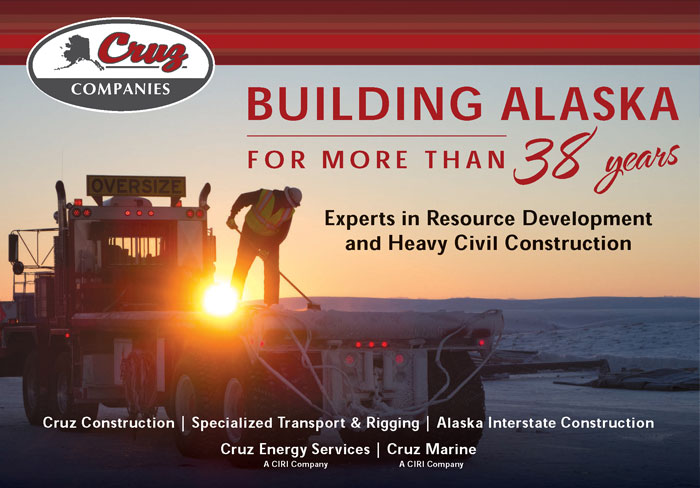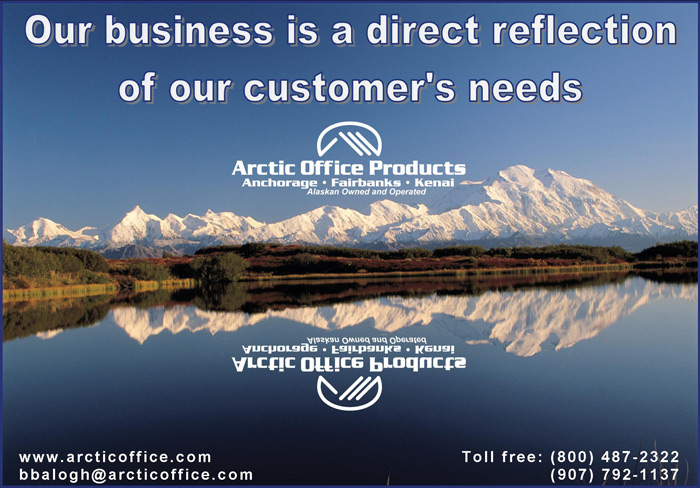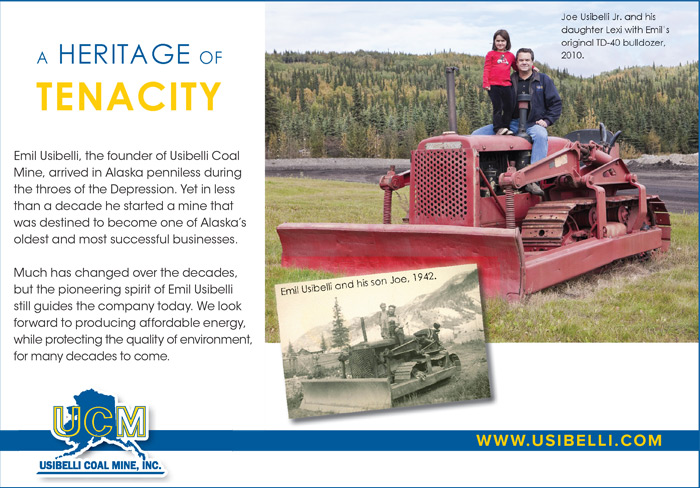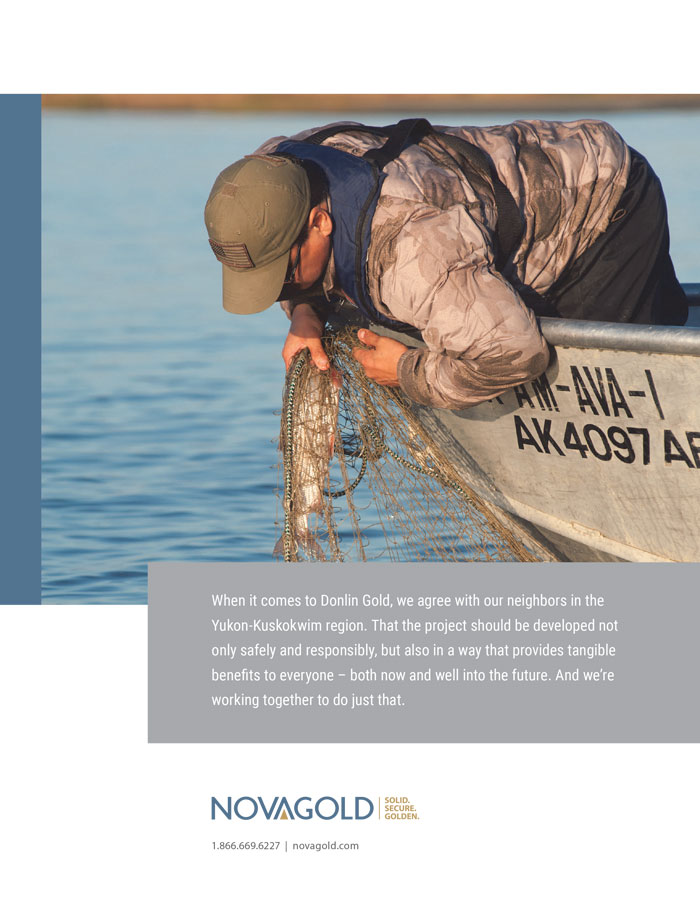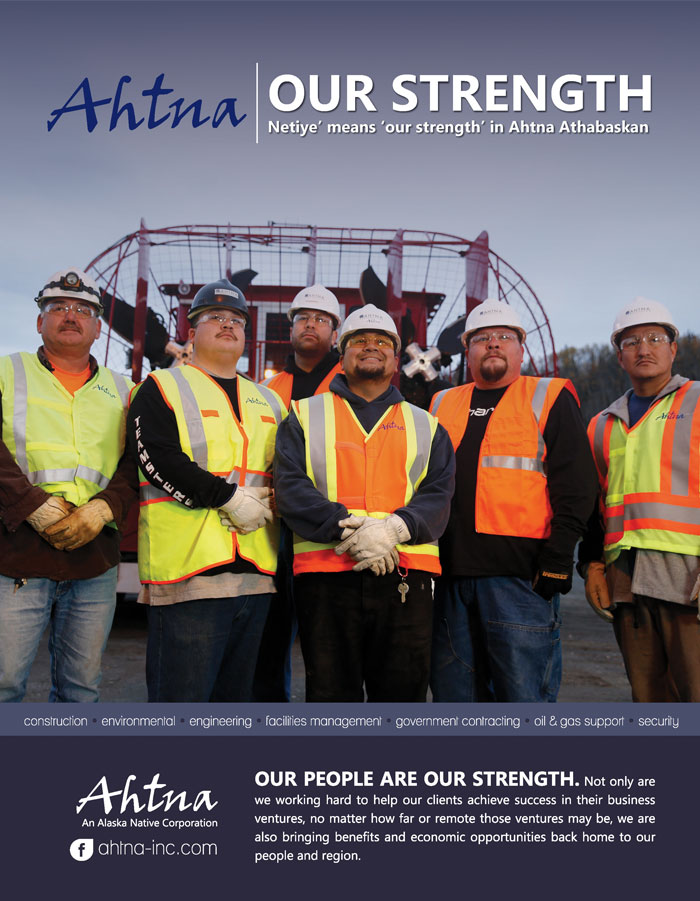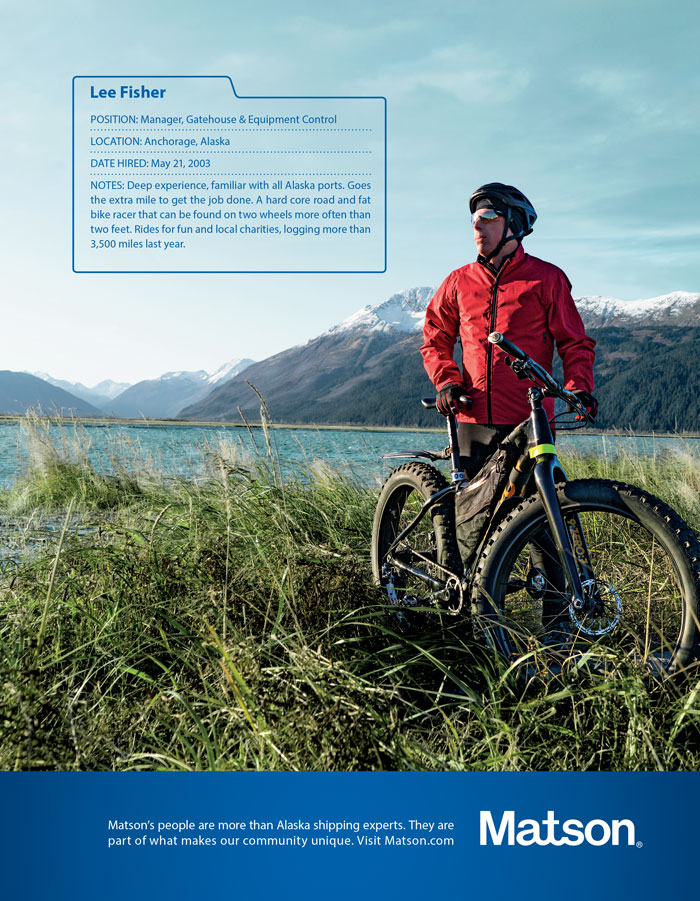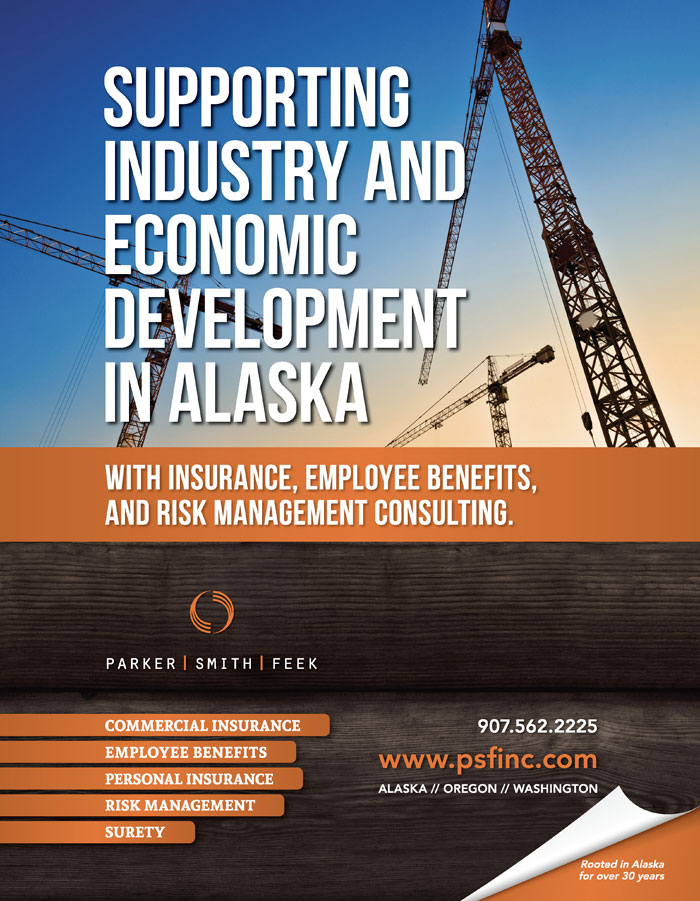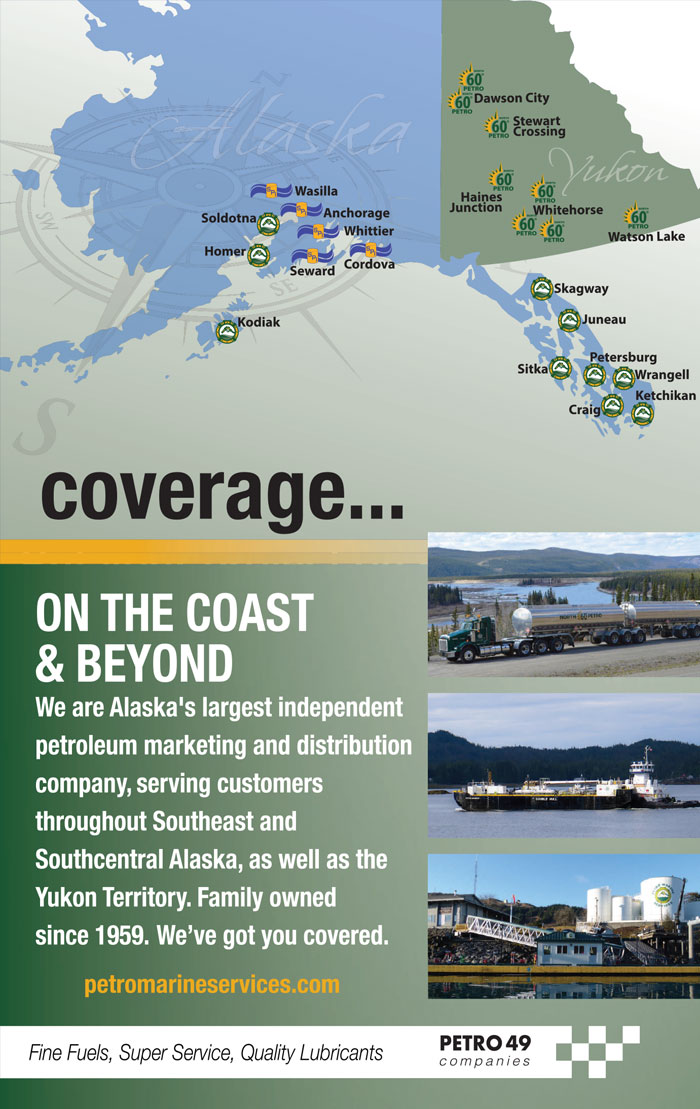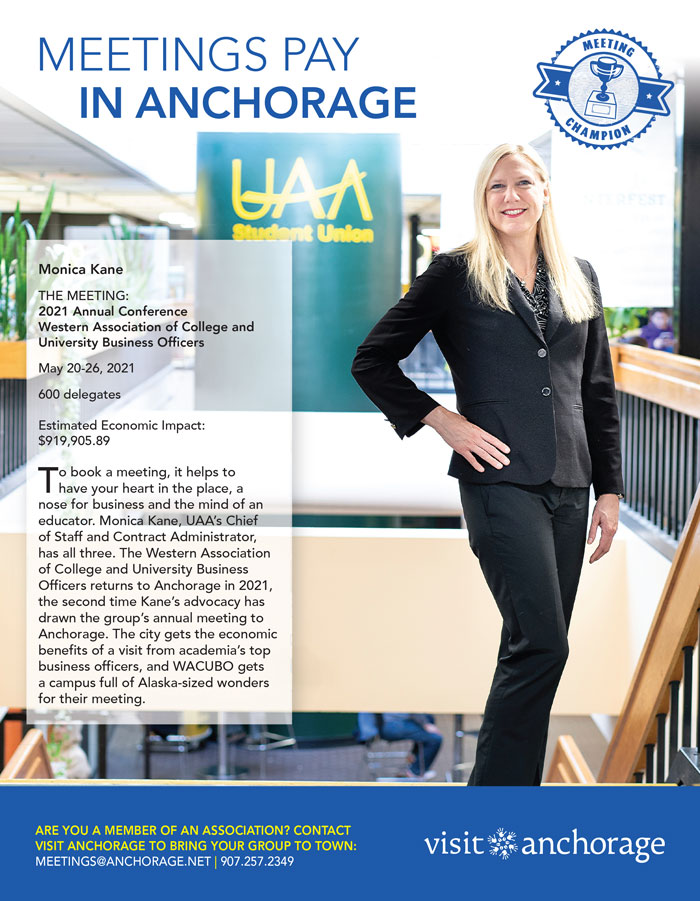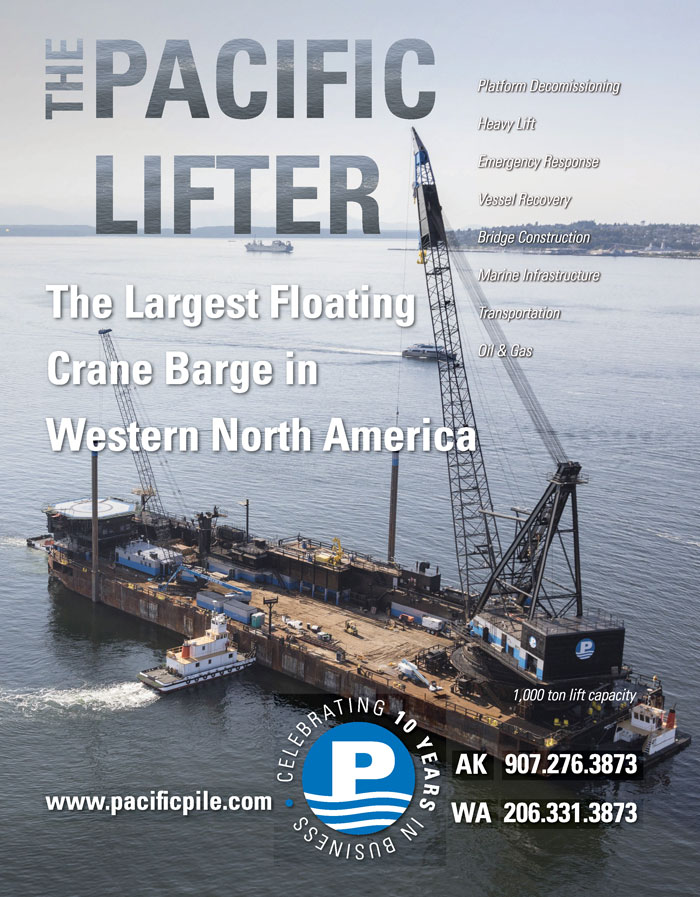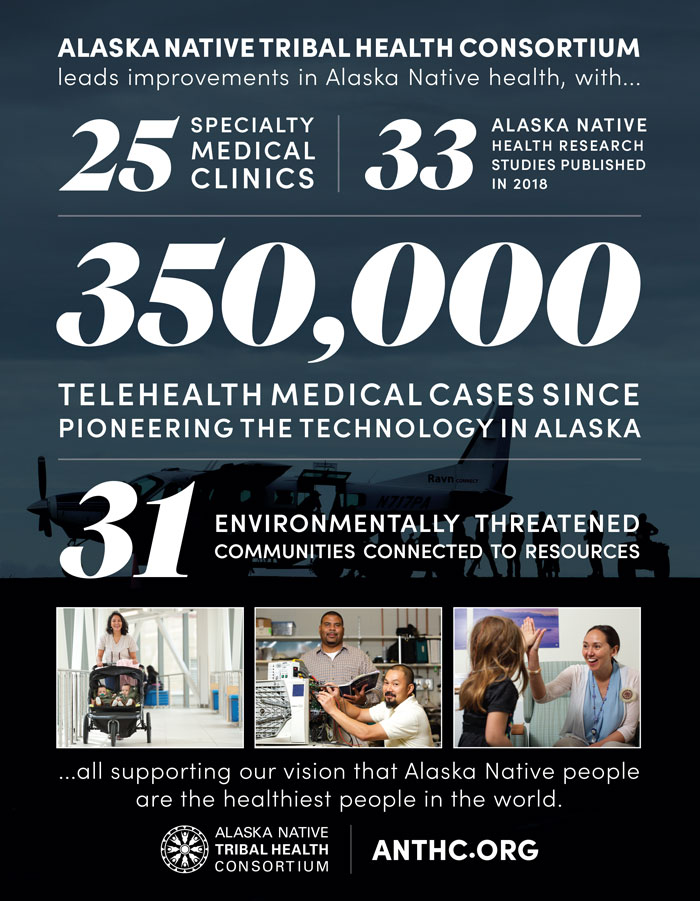vote today
Best of Alaska Business Winners
2. Alaska Hotel for Corporate Travelers
3. Brewery
4. Coffee Shop
5. Commercial Real Estate Firm
6. Corporate Citizen
7. Corporate Venue
8. Florist
9. Fundraising Event
10. Furniture Store
11. Graphic Design
12. Grocery Store
13. Gym
15. Hospital
16. IT Services
17. Place to Work 1-250 Employees
18. Place to Work 250+ Employees
19. Promotional Products
20. Restaurant to take Clients
21. Salon
22. Sushi
23. Takeout/Catering
24. Video Production Company
25. Web Production




Take the survey at: akbizmag.com/BOAB
Contents
Features
By Tasha Anderson
By Julie Stricker
By Tracy Barbour
Departments
By Kathryn Mackenzie
‘Heat, Light, and Mobility for a Changing World’
By Kathryn Mackenzie
‘Heat, Light, and Mobility for a Changing World’
The last few years have been hard for every sector in Alaska, and the challenges aren’t over (certainly the state’s budget issues aren’t resolved). But Alaska Business is optimistic, especially with estimates that there will be job growth this year in the oil and gas, construction, mining, healthcare, and tourism industries. Which makes now the ideal time to highlight the Corporate 100, those companies that are keeping Alaskans on their feet and in the workplace.
The Wonderful History of Bev Crum
By Tasha Anderson

Publishing Co. Anchorage, Alaska
Judy Patrick
Billie Martin
Toll Free: 1-800-770-4373
(907) 276-4373
www.akbizmag.com
Press releases: press@akbizmag.com
Alaska Business (ISSN 8756-4092) is published monthly by Alaska Business Publishing Co., Inc.,
501 W. Northern Lights Boulevard, Suite 100, Anchorage,
Alaska 99503-2577;
Telephone: (907) 276-4373;
© 2019 Alaska Business Publishing Co. All rights reserved. No part of this publication may be reproduced without written permission from the publisher. Alaska Business accepts no responsibility for unsolicited materials; they will not be returned unless accompanied by a stamped, self addressed envelope.
One-year subscription is $39.95 and includes twelve issues (print + digital) and the annual Power List. Single issues of the Power List are $15 each. Single issues of Alaska Business are $4.99 each; $5.99 for the July & October issues. Send subscription orders and address changes to circulation@akbizmag.com. To order back issues ($9.99 each including postage) visit simplecirc.com/back_issues/alaska-business.
From the Editor
he Corporate 100 is our chance to recognize and celebrate the companies that keep Alaskans working in good times and bad. The companies themselves are important to the health of our economy, but it’s the employees that really keep us all going. This marks the second year of many to come that we feature one of an organization’s longest-running employees—this year the amazing Bev Crum, ER Nurse Manager for the Emergency Department at PeaceHealth Ketchikan Medical Center—while giving some insight into how a company manages to retain quality employees like Crum for decades and decades (in this case, four of them).
Along with a directory of the state’s largest employers, we profile three organizations that qualified for the Corporate 100 list to learn about what they look for in an employee, the ways they show their staff appreciation, and how they give back to the community. It’s not enough just to employ people—to be truly successful at running a company of any size, employees have to be happy, healthy, and fulfilled. The companies we profile in the Corporate 100 Special Section starting on page 26 have found a formula that works for them, their employees, and their communities.
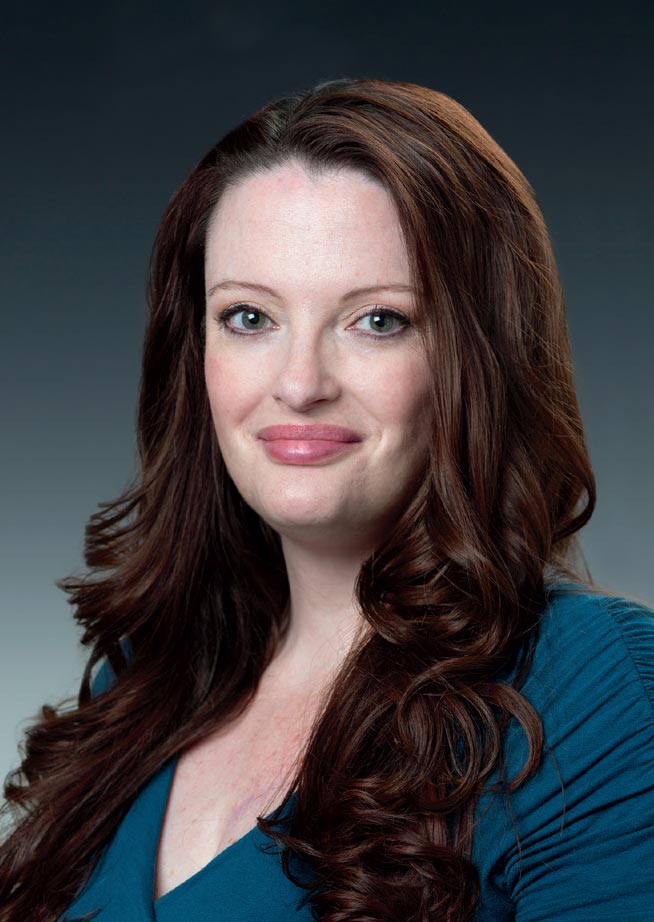

Kathryn Mackenzie
Managing Editor, Alaska Business
Alaska Regional Hospital
Alaska Regional Hospital
reak your leg in Anchorage and chances are you’ll spend a few hours in one of the city’s three main hospitals—Alaska Regional Hospital, Providence Medical Center, or the Alaska Native Medical Center. Break it out in the Bush, and you may find yourself having to fly to a larger city to get specialized care, especially if there are complications.
While there are many advantages to living in Alaska’s remote areas, one of the biggest drawbacks to rural living is the lack of access to specialized healthcare.
“Urban areas by definition are defined as a large population that can support a more robust healthcare infrastructure; rural areas do not have the same advantages,” explains Heidi Hedberg, chief of Rural and Community Health Systems, Alaska State Office of Rural Health.
© Kerry Tasker Photography
© Kerry Tasker Photography
n December, Alaska USA Federal Credit Union began celebrating a momentous milestone: 70 years of people helping people. The celebration kicked off with internal promotions, including a distinctive logo depicting the words “70 Years, Strength in Members” and special lapel pins for each employee. “For the whole year, we’ll be remembering our seventy-year tradition of people helping people,” says President and CEO Geoff Lundfelt.
That tradition began on December 6, 1948, when fifteen civil service personnel who supported military operations at Anchorage’s Alaska Air Depot formed a member-owned credit union. They pooled their savings so they could make loans to new people who would have otherwise had to wait a month to receive their paycheck. They also volunteered their time to operate the credit union-not hiring the first employee until 1959.
© Tasha Anderson
© Tasha Anderson
Made Right
atural resource extraction has acted as a foundation for Alaska’s economic activity since before ground even broke for the Trans Alaska Pipeline System and remains a vital part of Alaska’s economic makeup. But tying state funding primarily to commodity-driven industries has (and will again) put Alaska in a tight spot. It’s widely acknowledged that Alaska lacks a robust field of value-added businesses, which create local jobs, provide valuable materials at high quality and often lower cost, and keep Alaska money in Alaska.
Two businesses—in wildly different ways—have set their sights on making cost-effective, high-quality, local products: NRC Alaska and ImagineItAlaska.
transportation
By Isaac Stone Simonelli
ith only about 5,000 miles of paved roads to provide transportation throughout the 663,300 square miles of the Last Frontier, businesses know how essential air travel is to accessing clients, resources, and opportunities.
“We have a visible member company footprint in Alaska precisely because, for a lot of companies up there, they can’t do what they want to do unless they have an airplane,” explains Dan Hubbard, senior vice president of communications for the National Business Aviation Association (NBAA). “It’s a state with a lot of rural areas. It’s a state where a lot of places are not accessible by road or other means of transport that are more efficient.”
When air travel is necessary, there are five primary ways for businesses to access air transportation in Alaska: scheduled services, charter services, leasing a plane, fractional ownership, and full ownership of a plane. Which of these options will best meet a business’ needs depends on a number of factors. For most situations in Alaska, businesses will likely use aircraft regulated under Federal Aviation Administration Part 135 licensing, which covers the majority of small commercial airplanes, those with nine seats or fewer. Large commercial carriers, such as Alaska Airlines, operate their aircraft under a Part 121 license.
ith only about 5,000 miles of paved roads to provide transportation throughout the 663,300 square miles of the Last Frontier, businesses know how essential air travel is to accessing clients, resources, and opportunities.
“We have a visible member company footprint in Alaska precisely because, for a lot of companies up there, they can’t do what they want to do unless they have an airplane,” explains Dan Hubbard, senior vice president of communications for the National Business Aviation Association (NBAA). “It’s a state with a lot of rural areas. It’s a state where a lot of places are not accessible by road or other means of transport that are more efficient.”
When air travel is necessary, there are five primary ways for businesses to access air transportation in Alaska: scheduled services, charter services, leasing a plane, fractional ownership, and full ownership of a plane. Which of these options will best meet a business’ needs depends on a number of factors. For most situations in Alaska, businesses will likely use aircraft regulated under Federal Aviation Administration Part 135 licensing, which covers the majority of small commercial airplanes, those with nine seats or fewer. Large commercial carriers, such as Alaska Airlines, operate their aircraft under a Part 121 license.

Experts predict better times for some Alaskan job seekers
By Kathryn Mackenzie
y most accounts Alaska’s economy is finally set to emerge from several years of recession. The state’s residents can expect more employment opportunities with about 1,400 new jobs coming online in industries that have been stripping costs and reducing headcounts over the past four years. The primary drivers behind this (albeit slow) recessionary emergence are military spending, new and legacy projects in the oil and gas industry, and tourism, according to Alaska Economic Trends Job Forecast for 2019 by Karinne Wiebold, economist for the Alaska Department of Labor.
With that said, there are some unknowns keeping analysts and industry watchers cautiously optimistic about the state’s economic recovery.
Anchorage, AK 99503
206-783-3818
Seafood
Kotzebue, AK 99752
907-442-3301
Native Organization
Anchorage, AK 99508
907-212-3145
Health & Wellness
Through the eUnlimited Gaming Series, MTA supports the eSports community and creates scholarship opportunities via the MTA Foundation.
MTA
MTA builds infrastructure and networks for the long-term
he November 30, 2018, earthquake was not an insignificant event. But despite experiencing a pretty good shake, Matanuska Telephone Association (MTA) CEO Michael Burke is proud to report that the association’s network didn’t have any service outages, though in some areas it ran on backup power for a short time.
It’s symbolic of how MTA has found solid ground in the midst of significant changes in its industry. Burke says, “Across the country, telecommunications co-ops are struggling in this landscape of extreme technological change. Not us. MTA continues to grow and develop during a time of immense change.”
MTA and its wholly-owned subsidiaries have been growing in many ways, including expanding its team of employees and its engagement with the community. “I probably lost count in terms of how many people we’ve added in the last several years,” Burke says.
To find quality employees, MTA’s HR team regularly participates in recruitment efforts, including attending job fairs, sponsoring internship programs, and working with the Alaska Job Corps Center located in Palmer on internships and the International Brotherhood of Electrical Workers (IBEW) through apprenticeship programs “to hopefully bring in new talent and train them up.”
Through the eUnlimited Gaming Series, MTA supports the eSports community and creates scholarship opportunities via the MTA Foundation.
MTA
MTA builds infrastructure and networks for the long-term
he November 30, 2018, earthquake was not an insignificant event. But despite experiencing a pretty good shake, Matanuska Telephone Association (MTA) CEO Michael Burke is proud to report that the association’s network didn’t have any service outages, though in some areas it ran on backup power for a short time.
It’s symbolic of how MTA has found solid ground in the midst of significant changes in its industry. Burke says, “Across the country, telecommunications co-ops are struggling in this landscape of extreme technological change. Not us. MTA continues to grow and develop during a time of immense change.”
MTA and its wholly-owned subsidiaries have been growing in many ways, including expanding its team of employees and its engagement with the community. “I probably lost count in terms of how many people we’ve added in the last several years,” Burke says.
To find quality employees, MTA’s HR team regularly participates in recruitment efforts, including attending job fairs, sponsoring internship programs, and working with the Alaska Job Corps Center located in Palmer on internships and the International Brotherhood of Electrical Workers (IBEW) through apprenticeship programs “to hopefully bring in new talent and train them up.”
CORPORATE 100 Special Section | Beacon
Beacon’s quest to serve every Alaskan
ince Beacon Occupational Health and Safety Services was founded in 1999, the company has operated with three core values: rock star customer service, operational excellence, and have fun. According to Beacon President Holly Hylen, “Part of the ‘secret sauce’ of a strong company culture is to recruit and hire like-minded folks who share our passion for serving others, being part of the community, and loving and enjoying what they do.”
Beacon staff at the company’s Fairbanks location.
Beacon OHSS
Mark Hylen, Beacon’s vice president, agrees. “Really our team helps inspire that culture. Probably the biggest part of our orientation process is around our core values, so we try to inspire the elements of having fun, rock star customer service, and quality excellence at the very beginning, and then it’s really the people that embody it.”
Corporate 100 Special Section | BP Alaska
The central gas facility at Prudhoe Bay.
BP Alaska
BP Alaska sets sights on another 40 years in Prudhoe Bay
n 2017, BP Alaska celebrated forty years of operations at Prudhoe Bay, which over the last forty-plus years has produced 13 billion barrels of oil. “We’re trying to go for forty more,” says BP Alaska President Janet Weiss. “We can’t get there by doing what we used to do.”
To that end, as of a late-February interview, BP Alaska had completed 40 percent of a 3D seismic program on the North Slope, “one of the neatest things that I’ve seen in a few years,” Weiss says. The seismic survey, which should be completed this month, encompasses 455 square miles, the largest of its kind performed by BP Alaska in Prudhoe Bay. “We’re doing that in a forty-two-year-old field, which is fantastic. We did a smaller shoot at the North End of Prudhoe a few years ago, and it was so valuable, so beneficial, that we wanted to do the entire field.”
y interview with Bev Crum, ER nurse manager for the Emergency Department at PeaceHealth Ketchikan Medical Center, was absolutely delightful. It is clear, from even the short conversation that we had, that she is an intelligent, highly qualified, and deeply compassionate woman who has dedicated her career to caring for patients, peers, and her community.
PeaceHealth’s history stretches back in Ketchikan to 1923, when the Sisters of St. Joseph of Peace opened the Little Flower Hospital. Today PeaceHealth Ketchikan Medical Center employs 500 people, 80 percent of whom are women. The center’s number of employees qualified the organization for our 2019 Corporate 100 list, and because of the hospital’s rich history, we thought it was the perfect candidate to connect Alaska Business with an employee with an equally rich history. Enter Crum, who has worked at PeaceHealth Ketchikan Medical Center for more than forty years.
PeaceHealth Ketchikan
Medical Center
© William (BJ) Murdock
© William (BJ) Murdock
rian Benson has spent more than forty years working with Alaska’s oil and gas industry. As the Alaska area Vice President of Airgas, an Air Liquide America company, he has seen some major ups and downs in the industry.
“Some of the largest growth we saw was during the pipeline days,” he says. “Then we had some contraction, and then more growth, and then some contraction during the 2008 period when the country went through recession, and then steady growth until Alaska went through our recession here about three years ago.”
The latest recession occurred after oil prices plummeted in 2014, erasing nearly 6,500 jobs and $680 million in wages, according to a 2017 study by the McDowell Group commissioned by the Alaska Oil and Gas Association.
NEA-Alaska
NEA-Alaska
chools throughout the nation are facing a teacher shortage, and nowhere is this felt more starkly than in Alaska, where a large number of educators are recruited from the Lower 48. This, in addition to other factors including the remoteness of many of the state’s schools, the lack of a competitive retirement system, and legislative budget issues, makes recruiting and retaining skilled educators a monumental challenge.
According to Dr. Lisa Skiles Parady, executive director of the Alaska Council of School Administrators, the situation has become even more dire in the last couple of years.
ith more than 100 million employees in the American workforce, we have a melting pot of generations working amongst teams or actively seeking employment. We find ourselves caught in a paradox; torn between change resistant dynamics of honoring the legacy of a company or accepting advancement in management philosophy. Traditionalists, Baby Boomers, Gen X, Millennials, and Gen Z dynamic organizations are challenged with engaging a work force including multiple generations in the workplace. Complicating matters, according to Gallup (2017), only 18 percent feel their work is important based on the mission and purpose communicated by their employers. Furthermore, in 2016 the average annual organizational turnover rate in the United States workforce was roughly 18 percent. It is estimated that all other generational turnover aside, Millennials, who report the lowest rate of engagement, cost the US economy roughly $30.5 billion annually (Gallup 2017). Millennials (ages 23-28) make up roughly half of the work force and when combined with a tightening labor market, it is vital to recruit, hire, manage, communicate, and develop employees in a way that addresses turnover and a lack of purpose.
Phillips Cruises and Tours
Phillips Cruises and Tours
he cruise industry is crucial to Alaska tourism and the state’s financial well-being. The industry includes approximately 2,180 Alaska businesses that provide tours, activities, and services to the cruise lines and their passengers, according to Cruise Lines International Association (CLIA). The businesses range from retail, restaurants, and car-rental companies to air transportation providers, hotels and lodges, day cruises, and shore excursions.
The financial effect of the cruise industry is evident across multiple sectors, including direct visitor spending, cruise line spending and payroll, crew member spending, air and ferry tickets, employment and labor income, and revenue to municipal and state governments.
A 1906 Compound light touring vehicle with a woman’s day dress (1901-03) at the Fountainhead Antique Auto Museum in Fairbanks.
© Vanessa Orr
Arctic Shadows sculpture at The Museum of the North. (1996, Jacques and Mary Regat)
© Vanessa Orr

The Museum of the North, located on the University of Fairbanks campus.
© Vanessa Orr
© Vanessa Orr
© Vanessa Orr
© Vanessa Orr
ying in my cozy bed inside the toasty, tastefully decorated room staring up at the star-filled night sky from a Borealis Basecamp igloo, it was hard to believe that, with all of these creature comforts, I was actually spending the night off-the-grid outside of Fairbanks waiting for the aurora to light up the sky.
I had planned on roughing it a little, having made plans to travel in February to Fairbanks and then up the Dalton Highway to above the Arctic Circle to chase the elusive Northern Lights. What I hadn’t expected was the level of quality, custom-tailored accommodations and tours that would take the trip to a higher level.
While I often write about Alaska businesses, I rarely get to experience them from a user’s perspective, especially when it comes to being a tourist in the 49th state. But my recent trip to Fairbanks and the Arctic Circle to witness the aurora gave me a first-hand look at why more and more travelers cite Alaska as one of the number one items on their bucket lists.

n the First Friday of every month, galleries, boutiques, and locally owned businesses welcome the public to get out on the town and see what they have to offer. Every location approaches First Friday with its own style, with events ranging from live music to lectures to receptions where guests can speak with local artists about their work. Many galleries, museums, and shops extend their hours to accommodate Alaska’s art collectors, enthusiasts, and novices. Whether you drop by a favorite gallery or stroll the streets to visit as many locations as possible, Alaska’s First Fridays present awesome opportunities to connect with and support the artists that live and create among us. Below Alaska Business has listed just a few locations that participate in First Friday around the state.

4
5-28
12-14
8-14
Business Events
More than 5.6 million passengers traveled in and out of the Ted Stevens Anchorage International Airport (ANC) in 2018. The airport also saw 2.79 million tonnes of air cargo during 2018. Almost 85,000 additional passengers, a 3.1 percent increase compared to the previous year, passed through the gateway of Alaska. Most of the increase can be attributed to a robust tourism industry. Last year airlines boosted their flight frequency, used larger aircraft, or both, to accommodate the increased demand.
Anchorage, the world’s fifth busiest air cargo airport, also saw solid growth in its air cargo numbers. Air cargo grew by 2.52 percent to 2.79 million tonnes. dot.state.ak.us/anc
 Koteff will create, manage, and implement a program of strategic litigation to defend and expand Alaskans’ civil liberties. Prior to joining the ACLU of Alaska, Koteff was the human rights advocate and chief of enforcement for Alaska’s Human Rights Commission, where he litigated cases for more than twenty years on behalf of discrimination victims and guided the agency’s enforcement policies and investigative activities.
Koteff will create, manage, and implement a program of strategic litigation to defend and expand Alaskans’ civil liberties. Prior to joining the ACLU of Alaska, Koteff was the human rights advocate and chief of enforcement for Alaska’s Human Rights Commission, where he litigated cases for more than twenty years on behalf of discrimination victims and guided the agency’s enforcement policies and investigative activities.
 Stampas is responsible for leading the ACLU of Alaska’s policy advocacy to local, state, and federal law makers and administrators, as well as overseeing an aggressive program of grassroots organizing. Stampas earned her bachelor’s degree from Harvard University and her master’s degree in public administration from Columbia University.
Stampas is responsible for leading the ACLU of Alaska’s policy advocacy to local, state, and federal law makers and administrators, as well as overseeing an aggressive program of grassroots organizing. Stampas earned her bachelor’s degree from Harvard University and her master’s degree in public administration from Columbia University.
At a Glance
What movie do you recommend to everyone you know? 9 to 5. Lots of life and HR lessons to be learned from that cinematic classic!
What’s the first thing you do when you get home after a long day at work? Kick off my shoes, turn on the radio (KNBA 90.3 FM and KSKA 91.1 FM are my go-to stations) and check in with my two kiddos (Kaden—eight and Sloane—two) about their day.
If you couldn’t live in Alaska what’s your dream locale? I’d love to live in the San Juan Islands in Washington State.
If you could domesticate a wild animal what animal would it be? I may have to start growing a lot of bamboo, but I think a panda would be an adorable addition to our crew.
At a Glance
What movie do you recommend to everyone you know? 9 to 5. Lots of life and HR lessons to be learned from that cinematic classic!
What’s the first thing you do when you get home after a long day at work? Kick off my shoes, turn on the radio (KNBA 90.3 FM and KSKA 91.1 FM are my go-to stations) and check in with my two kiddos (Kaden—eight and Sloane—two) about their day.
If you couldn’t live in Alaska what’s your dream locale? I’d love to live in the San Juan Islands in Washington State.
If you could domesticate a wild animal what animal would it be? I may have to start growing a lot of bamboo, but I think a panda would be an adorable addition to our crew.
Off the Cuff
enea Saade, a shareholder at Littler Mendelson, counsels clients in Alaska and the Pacific Northwest on a broad range of employment issues including wage and hour compliance, accommodation and leave requests, enforcement and defense of noncompetition and nonsolicitation agreements, workplace investigations, and discipline and terminations. Saade also assists clients in the development, revision, and enforcement of employee handbooks, policies, and contracts and provides onsite employment law training. She regularly represents employers in federal and state court proceedings, agency audits, and investigations. Prior to joining Littler, Saade was a partner at two West Coast firms, as well as an associate at firms in Seattle and Boston.
Alaska Trends
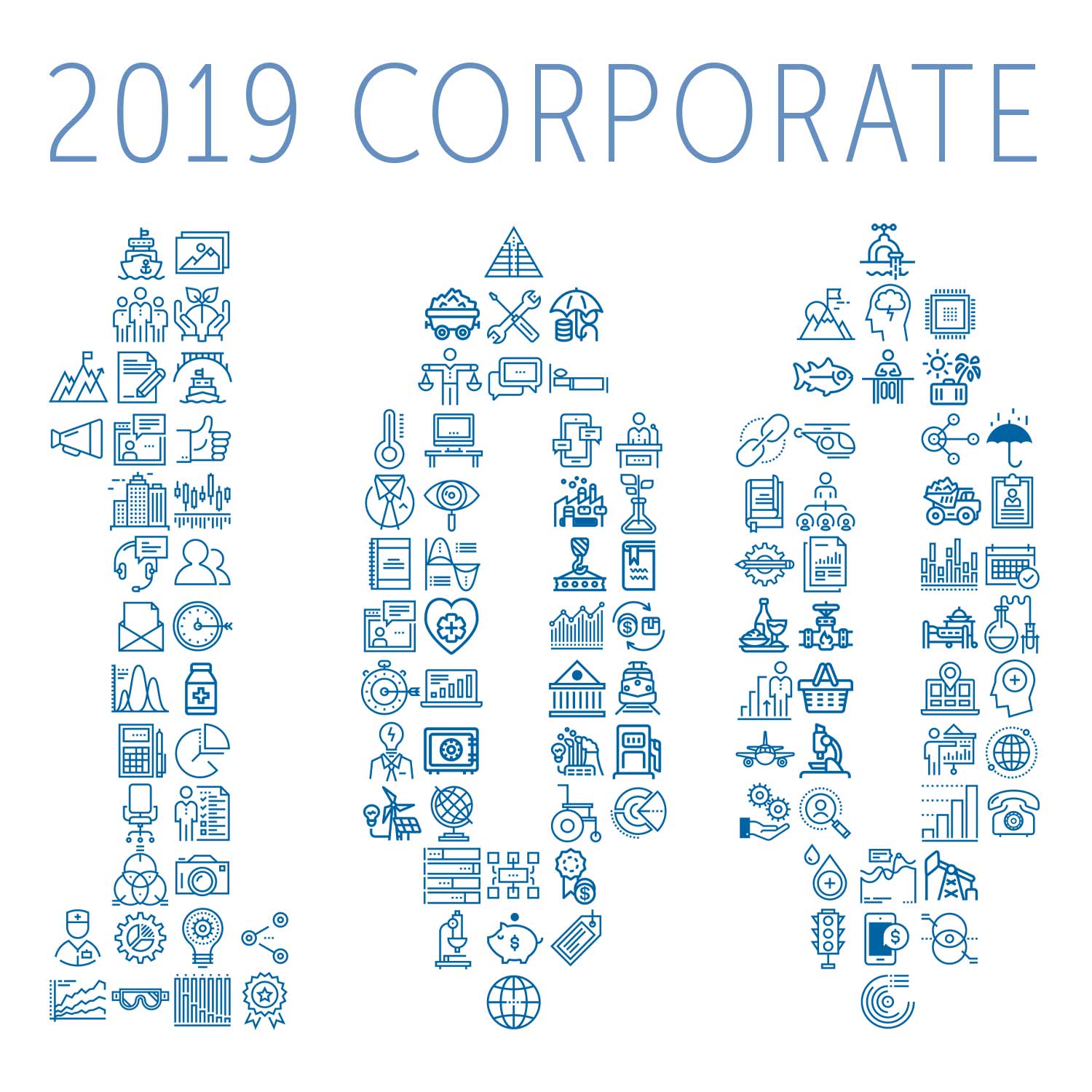
Employing Alaska & Beyond
he Corporate 100 list is comprised of companies that provide vital employment in Alaska’s population centers as well as its rural areas, which are often in need of job opportunities. For example, Trident Seafoods Corporation, which tops the 2019 list, has shore-based processing plants in Akutan, Chignik, Cordova, False Pass, Ketchikan, Kodiak, North Naknek, Petersburg, Sand Point, St. Paul, and Wrangell.
In addition to seafood, other major job-providing industries represented by the 2019 Corporate 100 companies include healthcare, Alaska Native corporations, and transportation.




